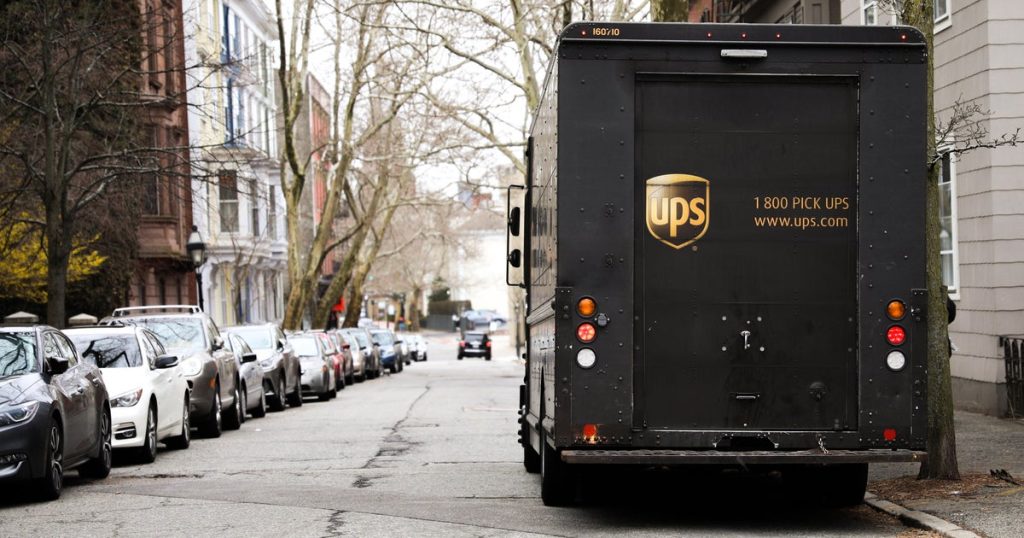UPS has announced plans to cut approximately 20,000 jobs in 2023 as part of a significant cost-reduction strategy. This decision arises from a reduced delivery volume from Amazon, the company’s largest client. With a workforce of around 490,000 employees, these layoffs will affect slightly over 4% of the total staff. The move is further supported by UPS’s intention to close 73 facilities by June 2025 and adjust its operating model to enhance profitability.
| Article Subheadings |
|---|
| 1) Overview of UPS Job Cuts |
| 2) Financial Impact and Cost-Saving Measures |
| 3) The Changing Relationship with Amazon |
| 4) UPS’s Global Operations and Trade Policies |
| 5) Future Outlook for UPS |
Overview of UPS Job Cuts
UPS’s plan to eliminate 20,000 jobs signifies a substantial retrenchment effort aimed at improving efficiency within the company. This announcement was made amid challenging business conditions and reflects a strategic pivot in handling operational demands. With over 490,000 employees globally, the reduction will impact roughly 4% of its workforce, mirroring prior announcements where 12,000 positions were cut. Such layoffs signal a pronounced shift as UPS adjusts to diminishing package volumes while attempting to optimize its operational framework.
Financial Impact and Cost-Saving Measures
UPS anticipates that the job cuts will yield significant financial savings, estimating around $3.5 billion by the year’s end. During a recent earnings call, Chief Financial Officer Brian Dykes emphasized that the planned reductions are intricately linked to enhancing domestic operating margins. The company reported $21.5 billion in revenue for the last quarter, yet these figures are outpaced by the need to streamline costs. UPS is committed to further consolidating its facilities—aiming to close 73 locations by the end of June 2025—representing a crucial aspect of its restructuring strategy.
The Changing Relationship with Amazon
The relationship between UPS and Amazon has faced new dynamics as UPS moves to cut its delivery volume significantly. Earlier this year, UPS announced a strategic agreement aimed at reducing delivery volumes from Amazon by more than 50% in the latter half of 2026. The motivations behind this reduction are centered around enhancing revenue quality and profitability rather than just operational necessity. An Amazon spokesperson confirmed the robust working relationship, noting that the e-commerce giant had even proposed increasing UPS’s delivery volumes prior to these changes. However, operational constraints led UPS to make this pivotal decision.
UPS’s Global Operations and Trade Policies
UPS’s operational footprint spans over 200 countries, but it faces new challenges related to global trade policies. Recent tariffs implemented by various governments, including those introduced during prior administrations, could significantly affect the logistics industry. UPS has strategically positioned itself to inform customers about these developments through its website, ensuring they remain aware of the impact these changes may have on shipping costs. In addition to keeping customers informed, UPS has introduced a tool known as UPS Global Checkout, which enables online shoppers to understand upfront the associated duties, fees, and taxes on their purchases.
Future Outlook for UPS
Looking ahead, UPS’s strategy centers on optimizing operations and achieving greater cost efficiencies while managing its workforce. The job cuts and operational adjustments are designed not only for short-term savings but also to reposition the company amid evolving market conditions. This proactive approach aims to bolster UPS’s market standing and ensure sustained profitability in an increasingly competitive landscape. Future forecasts will hinge on the company’s ability to adapt quickly to fluctuations in demand and maintain strong relationships with key partners, including Amazon and other clientele.
| No. | Key Points |
|---|---|
| 1 | UPS plans to cut 20,000 jobs as part of a cost-cutting strategy. |
| 2 | The company expects to save $3.5 billion through this consolidation. |
| 3 | UPS will close 73 facilities by mid-2025 as part of the restructuring effort. |
| 4 | There is a significant reduction in delivery volumes from Amazon, UPS’s largest customer. |
| 5 | Global trade policies and tariffs present further challenges for UPS operations. |
Summary
The recent announcement by UPS to cut 20,000 jobs underscores the challenges the company faces in an evolving market, heavily influenced by changing relationships with major clients like Amazon and global trade policies. As UPS implements these layoffs and facility closures, its focus remains on enhancing profitability and operational efficiencies. This strategic pivot highlights the need for logistics companies to remain agile in response to shifting economic conditions.
Frequently Asked Questions
Question: Why is UPS cutting jobs?
UPS is cutting jobs primarily to reduce costs in light of a significant decrease in delivery volumes from Amazon, its largest client. This decision is part of a broader strategy to enhance profitability and operational efficiency.
Question: How many jobs will UPS eliminate?
UPS has announced the elimination of approximately 20,000 jobs, which accounts for slightly over 4% of its workforce.
Question: What other measures is UPS taking to improve profitability?
In addition to job cuts, UPS plans to close 73 facilities by mid-2025, aiming to streamline operations and reduce overhead costs.


